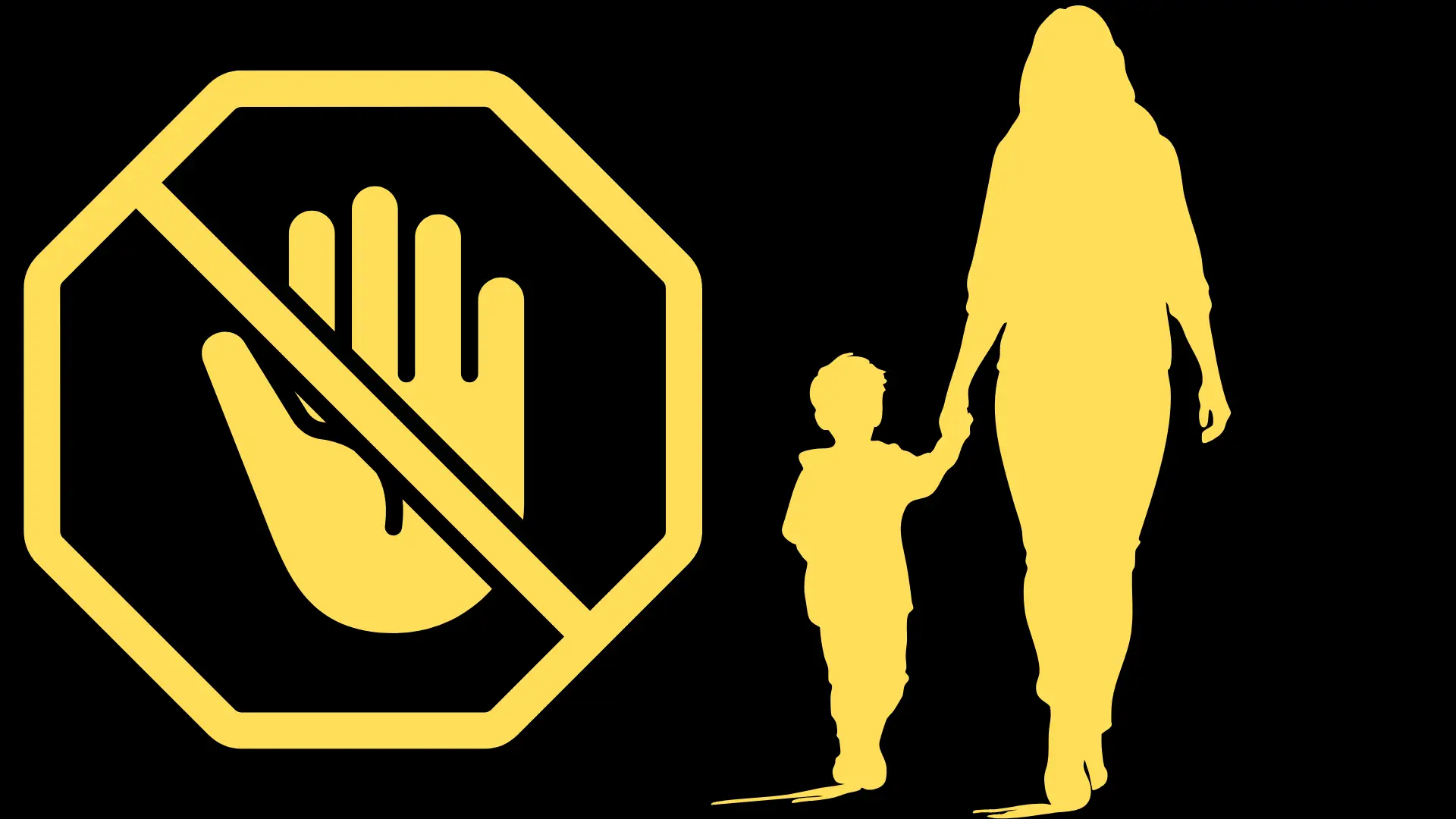My Ex is Using a Non-Molestation Order to Stop Me Seeing My Child: What Are My Options?
“Last Updated” Date: Friday, 10 October 2025
There are few things as immediately and profoundly distressing as having your contact with your child cut off. When the mechanism used to do this is a Non-Molestation Order, a legal tool intended for safety, the pain is compounded by a deep sense of injustice. You may feel like the ground has disappeared beneath you, and I have been subjected to significant emotional discomfort at the way this process can be weaponised against your relationship with your child.
This is a serious but absolutely manageable legal challenge. You need to understand one critical truth: a Non-Molestation Order does not, by itself, determine child arrangements. Judges are highly aware that this protection order is often misused to gain an unfair advantage in a contact dispute. Your primary goal is to remain calm, strictly comply with the order, and swiftly bring the issue of child contact back before the Family Court. This guide provides the authoritative, strategic roadmap to challenge this tactic and secure your child’s right to see you.
Key Takeaways
- An NMO is Not a Child Arrangements Order: They are separate legal tools. The order is about your conduct toward your ex, not automatically about the child’s welfare or your right to contact.
- The Law is On Your Side: The court’s starting point is the ‘presumption of parental involvement’. It’s your ex-partner’s job to prove that your involvement poses a risk of harm to the child.
- Your Main Option is a C100 Application: If contact has been stopped, you must act. The most effective step is to make an urgent application to the court for a Child Arrangements Order to get the issue in front of a judge quickly.
- Do Not Breach the Order: Reacting in frustration will likely lead to your arrest and will destroy your family court case. You must fight this battle in court, not on the doorstep.
Want one-to-one guidance on this? Message us now on WhatsApp.
Jump To
- A Deep Dive: The Core Legal Principles You Must Understand
- Your Strategic Path: Making a C100 Application
- At a Glance: Supervised Contact vs. Indirect Contact
- Common Mistakes That Will Ruin Your Case
- FAQs about Non-Molestation Orders & Contact
As a former CAFCASS and Children’s Services Social Worker, I’ve seen this tactic play out countless times. I know the judicial attitude: Non-Molestation Orders are for protection, but they are often used as a blunt instrument in child arrangements disputes. The judge’s focus will always be the child’s welfare, not the adult dispute. Your job is to make a calm, proactive application that reminds the court of the child’s needs.
A Deep Dive: The Core Legal Principles You Must Understand
Official Definition: A Non-Molestation Order is a protective injunction made under the Family Law Act 1996, focused on the behaviour between adults. A Child Arrangements Order is made under the Children Act 1989, and its sole principle is the child’s welfare. A judge will consider the allegations in the injunction case, but the two are not legally the same.
The Separation of Orders
It’s vital to understand that a Non-Molestation Order is about the relationship between you and your ex-partner. A Child Arrangements Order is about the relationship between you and your child. They are governed by different laws and have different purposes.
What This Means For You: You must treat them as separate legal issues. The non-molestation hearing is about your behaviour towards your ex; your C100 application is about your child’s right to a relationship with you. Winning the fight for contact does not depend on you ‘disproving’ the Non-Molestation Order (though you may wish to defend a false non-molestation order).
The Presumption of Parental Involvement
Section 1 of the Children Act 1989 contains a ‘presumption of parental involvement’. This means the court must presume that a parent’s involvement will further their child’s welfare, unless there is evidence to suggest that involvement would put the child at risk of harm.
What This Means For You: The judge’s starting point is that your child should see you. It is your ex-partner’s job to provide evidence to the court that involving you would create a risk of harm *to the child*. The NMO is evidence of alleged risk to the ex-partner, not automatically to the child.
Example: Snippet from a Position Statement for an Urgent C100 Application
I am making this urgent application because the Respondent has unilaterally suspended all contact between me and our child, [Child’s Name], since she obtained a non-molestation order on 1st September 2025.
The non-molestation order does not contain any clauses restricting my contact with [Child’s Name]. I have sought advice and complied perfectly with its terms. The Respondent is now using the order to prevent all contact, which is a significant and harmful change to the status quo for our child. A copy of the Order is attached at Exhibit A.
Prior to this, I had consistent contact with [Child’s Name] every weekend, and my communication with the school remains positive, as confirmed in the messages at Exhibit B.
This application is therefore necessary to safeguard my child’s right to a relationship with me, a matter separate from the adult injunction, and I ask the court to urgently reinstate contact under the ‘presumption of parental involvement’.
A Real Life Scenario: Imagine David, who was served with an order after a heated argument. His ex-partner immediately stopped all contact with his two daughters, saying the order forbade it. David felt the sinking feeling that his entire world was collapsing. He was tempted to send an angry message, but instead, he immediately sought expert support. We helped him file an urgent C100 application, focusing only on the children’s need for their father and quoting the legal presumption. Within three weeks, the court listed a hearing, and the judge, seeing David’s calm and child-focused response, ordered immediate interim supervised contact, setting the stage for full contact to be restored.
Your Strategic Path: Making a C100 Application
The most important action you can take is to apply for a Child Arrangements Order using the C100 form. This is the official mechanism for getting contact back on the court’s agenda.
- Complete and File the C100 Form Urgently: This application forces the court to deal with the specific issue of child contact, separate from the Non-Molestation Order. It is your most powerful tool to end the unilateral stop of contact.
- Address the NMO Calmly in Your Statement: Confirm you are complying perfectly with the Order, and state clearly that the Order does not prevent child contact, requesting that the court make an express Child Arrangements Order.
- Prepare for the CAFCASS Call: After you file the C100, CAFCASS will conduct safeguarding checks. Be honest, calm, and child-focused during the call—your behaviour now is crucial.
- Consider Your NMO Response Separately: Decide if you will contest the NMO or perhaps offer an undertaking. This is a separate legal battle, but your calm approach will help your contact case.
At a Glance: Supervised Contact vs. Indirect Contact
If the court has concerns, it may order temporary alternatives to keep the relationship going. It’s important to see these as stepping stones, not final outcomes.
| Feature | Supervised Contact | Indirect Contact |
|---|---|---|
| Goal | ✅ To provide a safe, assessed environment for contact, aiming for unsupervised contact in the future. | ❌ To keep the parent-child relationship alive when direct contact is not possible. It’s a poor substitute for face-to-face time. |
| When to Use It | When there are allegations of risk, but the court feels direct contact is important and needs to be assessed. | When direct contact is deemed too risky or is not practical, but the court wants to maintain a link. |
| Example | One hour every Saturday at a registered contact centre. | Weekly letters or cards, or scheduled 10-minute phone calls. |
| Legal Test | The benefit to the child outweighs any risk, which can be managed in a supervised setting. | Direct contact presents an unmanageable risk, but the child’s welfare still requires some connection. |
| Outcome | ✅ Direct relationship is maintained and assessed, often leading to unsupervised contact. | ❌ Relationship is weakened but sustained; often a temporary solution. |
Avoid costly mistakes — chat with us today and get practical, fixed-fee support.
Common Mistakes That Will Ruin Your Case
From my experience inside the system, I have seen otherwise strong cases crumble because fathers, under immense stress, made simple, avoidable mistakes. The court is focused on safety and compliance. Any deviation is a gift to your ex-partner.
Common Pitfalls:
- Losing Your Temper or Contacting Your Ex: Why this is a mistake: This proves her point that you cannot regulate your emotions and is the single fastest way to lose contact. The court must see you as the calm, reasonable parent.
- Breaching the Non-Molestation Order (Even Accidentally): Why this is a mistake: This is a criminal offence and will be used as absolute proof that you are a risk and cannot be trusted to follow court orders. Fight in court, not on the doorstep.
- Delaying Your C100 Application: Why this is a mistake: The longer no contact goes on, the harder it is to restart it. The negative status quo becomes entrenched, and the court can become reluctant to change it. Delay is your enemy.
FAQs about Non-Molestation Orders & Contact
Fathers in this situation often have the same urgent questions. Here are the clear, strategic answers you need.
Can a non-molestation order legally stop me from seeing my child?
No, not automatically. A Non-Molestation Order is about adult behaviour. It only stops child contact if a judge has added specific clauses forbidding it (which is rare), or if the judge has simultaneously made a separate Child Arrangements Order. If contact has been stopped without such a clause, you must apply to the court for a new Child Arrangements Order.
Is it parental alienation if my ex uses an order to stop contact?
Using a Non-Molestation Order solely as an excuse to block contact can be a feature of alienating behaviours, especially if the allegations are proven to be false or exaggerated. If this is the case, the court can make very serious findings about the welfare implications.
What is the first step I should take if my ex is stopping contact?
The strategic first step is to make an urgent application to the court for a Child Arrangements Order using a C100 form. This immediately forces the court to deal with the child contact issue as a matter of urgency, separating it from the injunction dispute.
How quickly can I get to court to sort out child contact?
If contact has been stopped entirely, and you file an urgent C100 application, the court will typically list a first hearing within 2 to 6 weeks, allowing you to challenge the situation directly.
Take Control: Get Expert Support to Restore Contact
At Dads Consultancy, we provide the specialised, expert support to move you from crisis to control. We don’t just offer advice; we provide practical, hands-on assistance with the critical documents and stages of the family court process. We can help you with:
- Making Your Application (C100)
- Handling the CAFCASS Call
- Navigating Child Arrangements Orders
- McKenzie Friend Support
- MIAM/Mediation Guidance
- Responding to Non-Molestation Orders
- Drafting Powerful Position Statements
- Navigating Section 7 Reports
Don’t let an injunction be used to shut you out of your child’s life. Your strategic response right now is the most important factor in the success of your case. Message us on WhatsApp today for fixed-fee, urgent support — and take back control of your contact with your child.
🧠 Insider Insight: Lach, our founder, is a former Cafcass and Children’s Services Social Worker. He has been on the inside of the family court system, writing the very reports that influence court outcomes. Now he uses that insider knowledge to help dads navigate the process effectively. Learn more about Lach’s background.




